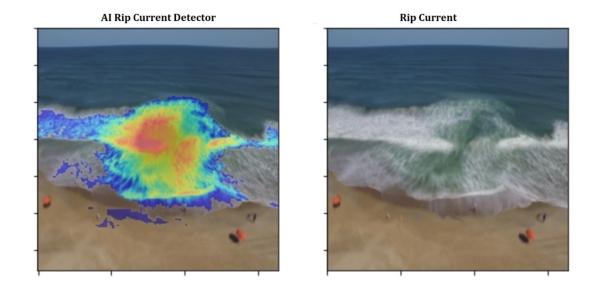Beachgoers could be safer thanks to a new technology with the potential to give real-time updates of rip currents.
Rip currents are narrow, fast-moving segments of water that travel away from the shore. They can reach speeds of 2.5 metres per second, which is quicker than the fastest Olympic swimmer.
NIWA and Surf Life Saving New Zealand (SLSNZ) have developed a state-of-the-art rip current identification tool using artificial intelligence (AI) and deep learning. The tool showed around 90% accuracy detecting rip currents in videos and images in trials. The work is published in the journal Remote Sensing.
NIWA coastal scientists Dr Christo Rautenbach and Neelesh Rampal say the technology has been tested on a large variety of images from different coastal settings and they hope will ultimately be used by beachgoers to alert them of rip currents.
“We hope that by using cameras and drones at beaches, the tool will be able to scan video footage and notify people of the presence of rip currents. Even knowledgeable surf lifeguards can struggle identifying rips, depending on the beach and environmental conditions. As well as this, some beaches are remote or really large, so surf lifeguards can use all the extra help they can get!” said Dr Rautenbach.
The technology was developed by feeding millions of coastal aerial images into the AI model, along with artificial rain and fog data, to teach it to identify where rips occur in real-time, regardless of weather conditions and camera angle.
Adam Wooler, Special Projects Manager at SLSNZ, says once operationalised the technology will be invaluable for people while they’re out enjoying our beautiful coastline.
“This is only the beginning of our research together and our goal is to build even more effective, accurate and reliable safety tools for New Zealand beaches. Rip currents can sweep even the strongest swimmers out to sea – we had 90 people sadly drown in New Zealand last year, 25 of them on beaches, so we’re hoping that this technology helps to significantly reduce that number,” said Wooler.
Rip currents are reported as the most hazardous safety risk to beachgoers around the world. An Australian study published in 2013 revealed that they have killed more people on Australian territory than bushfires, floods, cyclones, and shark attacks combined.

